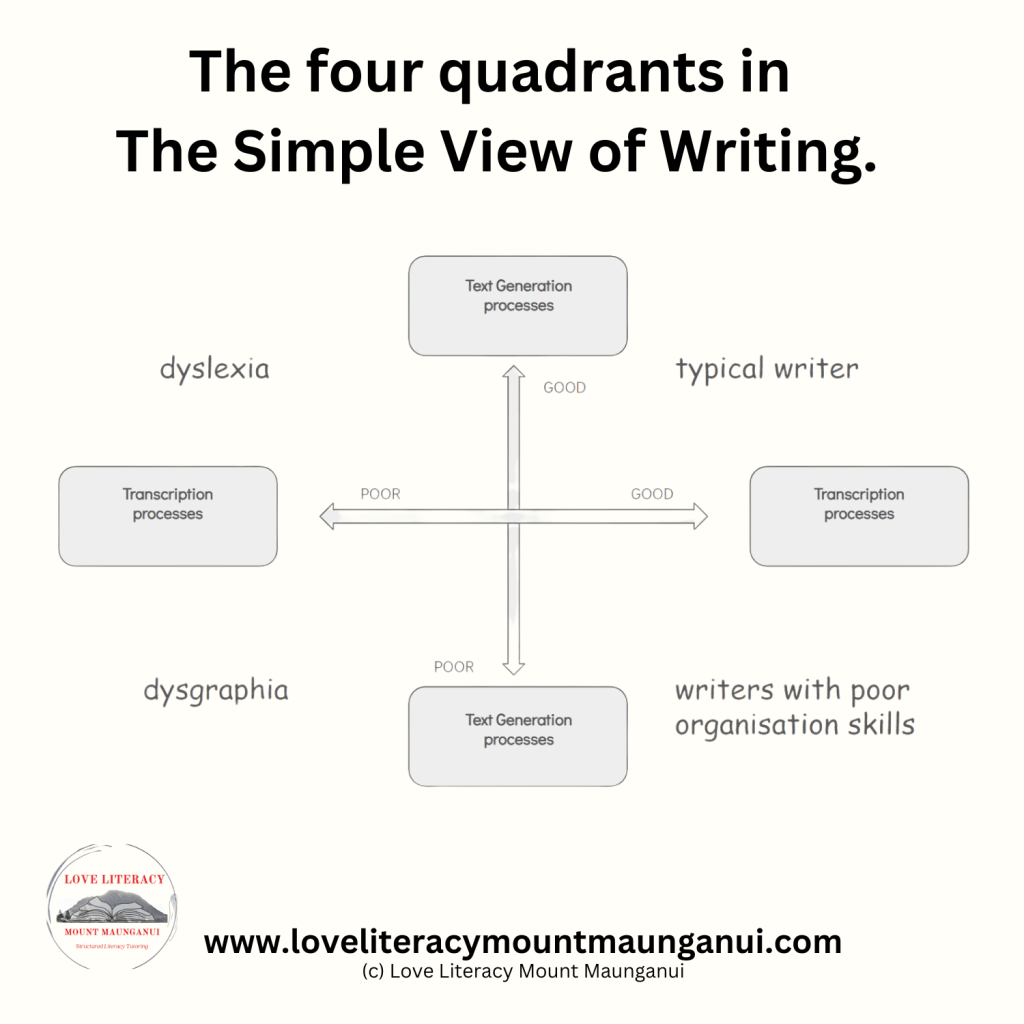This blog post is the third in a series about writing. I was prompted to write these after coming across a post about writing in a forum I follow a few weekends ago. The post described a parent’s frustration with their child’s writing process. Although the child writes extensively to express their ideas, the resulting work is affected by poor spelling, lack of punctuation, and illegibility when later reviewed.
In part one, I explained that writing is far more than just putting words on a page. It’s a multifaceted skill that requires a deep understanding of language, communication, and human emotion. I wrote about how we must recognise the complexities of writing and the importance of mastering it so that learners can hone this critical skill.
In part two, I looked at two theories behind writing, The Simple View of Writing (Berninger et al., 2002) and The Writing Rope (Sedita, 2019). Understanding the complexities of writing through frameworks like The Simple View of Writing and The Writing Rope allows us to pinpoint the specific challenges a child may face.
In this blog post, we will deviate slightly by looking at The Simple View of Writing through a Dysgraphic and Dyslexic lens. In this post, I hope to provide insights and knowledge so you may make informed decisions about students who need additional support with writing before it’s too late.
Firstly, we will look at Dysgraphia. ‘Dys’ refers to impairment, and ‘graph’ refers to the hand’s function in writing. Therefore, Dysgraphia is the condition of impared writing by hand. (The International Dyslexia Association, 2024) The impaired handwriting can also affect spelling. Learners with dysgraphia may be affected in their handwriting only, or only have impaired spelling (without reading problems), or both impaired handwriting and impaired spelling.
Key takeaway: Learners with dysgraphia will have either impaired spelling, impaired writing speed, impaired handwriting or all three.
Dyslexia can be defined as a learning impairment that occurs in the brain, and is characterised by difficulties with accurate and/or fluent word recognition and by poor spelling and decoding abilities. (International Dyslexia Association, 2024). These difficulties typically result from a deficit in phonological pathways in the brain in the component of language that is often unexpected in relation to other cognitive abilities and after the provision of effective classroom instruction. (International Dyslexia Association, 2024).
Dyslexic learners will find that their writing can be affected due to their reading difficulties. We see this in poor spelling, at times poor legibility, they may not have a diverse vocabulary, as well as in the organisation of their writing (Herbet et al., 2018).
Key takeaway: In terms of writing, learners with dyslexia will have one or both of the following: impaired spelling and impaired writing speed.
So how does this tie into the theory, and what does it tell us? I have put together the different patterns of writing performance that we may see in students with dysgraphia and dyslexia, drawing from the theory behind The Simple View of Writing. Let’s first remind ourselves that The Simple View of Writing says that Writing is a product of Text Generation skills and Transcription skills.
Text Generation – TG Transcription – T Writing – W
TG x T = W
0 x 1 = 0
1 x 0 = 0
0 x 0 = 0
1 x 1 = 1
Lyn Stone writes, “When students struggle with both (Text Generation and Transcription), this is a strong indicator of dysgraphia.” Typical dyslexic learners will have a poor standard of written work, despite their strong oral language abilities and ability to come up with ideas for writing. The Rose Report (2009).

The quadrants above can offer a framework for understanding the distinct challenges faced by each group. For instance, a student with dysgraphia may have brilliant ideas but struggle with the mechanical act of writing, organising, and forming a coherent text. A student with dyslexia may have brilliant ideas but find it hard to transcribe them accurately due to spelling and decoding difficulties. Writers with poor organisational skills or executive function skills may have good spelling and handwriting, however, struggle to come up with coherent ideas and be able to logically put them together. Finally, a good writer will be able to generate good written prose, along with having good handwriting and spelling.
The looming question, however, is what if a student has neither dyslexia, dysgraphia, nor any executive function challenges, and yet is still unable to generate text?
As I conclude this exploration into writing difficulties through the lenses of dyslexia and dysgraphia, it’s important to reflect on the insights gained and how they can be applied in an educational setting.
My biggest challenge for you is this: look at each of your students with a critical eye. As educators, it’s vital to look beyond surface-level mistakes and identify underlying patterns that could indicate specific learning disabilities like dyslexia or dysgraphia in the writing process. Here are a few steps to take:
- Observe Patterns: Regularly review student work to identify consistent issues with spelling, handwriting, or writing speed.
- Assess Holistically: Consider both oral and written language abilities. A student who articulates ideas well but struggles to write them down may need different support than one with poor oral language skills.
- Use Frameworks: Apply theories like The Simple View of Writing and The Writing Rope to pinpoint where a student is struggling—be it in transcription or text generation.
- Intervene Early: The earlier we identify and support students with these challenges, the better their long-term outcomes will be.
By considering these approaches, we can make informed decisions and provide the necessary interventions to support students with writing difficulties.
In part four of this series, I will very briefly look at what has influenced the way writing has been taught in the past, as well as provide suggestions for further research into implementing a writing framework that you may wish to explore further.
Further reading:
https://www.bdadyslexia.org.uk/advice/children/is-my-child-dyslexic/signs-of-dyslexia-primary-age
https://www.understood.org/en/articles/understanding-dysgraphia
https://lifelongliteracy.com/lessons/dysgraphia-5
